14 Unique Wall Clocks Found in Old Schools and Factories
Old schools and factories are full of unique items, but none stand out quite like their vintage wall clocks. These clocks didn’t just mark time. They helped structure the daily lives of everyone who used them. Whether displayed in a classroom or factory floor, each clock had its own charm and significance. These timeless pieces of history continue to captivate those who appreciate a blend of function and design. Want to see how these clocks still hold up after all these years?
This post may contain affiliate links, which helps keep this content free. Please read our disclosure for more info.
Warren Telechron Oak Factory Office Wall Clock
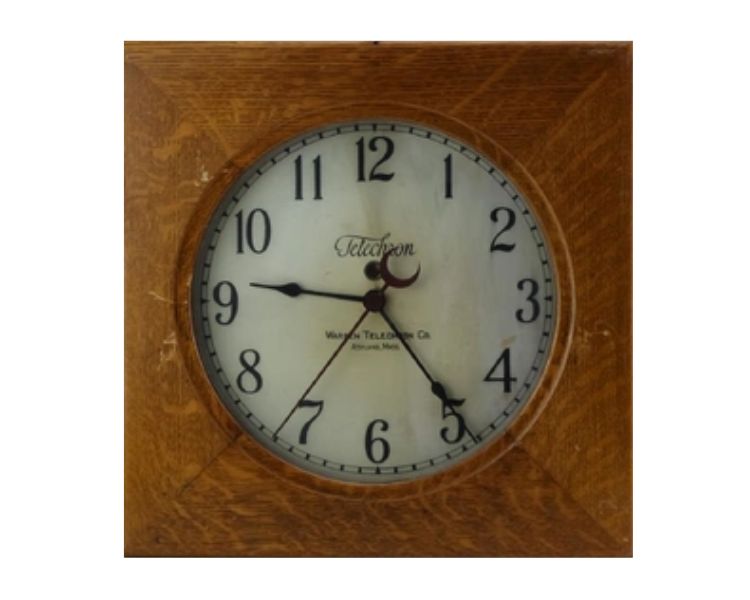
The Warren Telechron oak clock from the 1920s is a vintage timepiece that was widely used in factory offices. Its electric mechanism was a technological breakthrough for its time, making it reliable and easy to maintain. The warm oak casing and minimalistic dial made it both functional and stylish for industrial spaces. This clock can still be found in some old factory buildings and offices that cherish their history. Today, it is valued between $150 and $250, depending on its condition and originality.
Due to its reliable electric movement, the Warren Telechron clock became a staple in the workplace during the early 20th century. It was designed to be practical, allowing workers to easily track time throughout their shifts. The simplicity of the design made it versatile for many types of offices and factories. It is also a favorite among collectors who appreciate vintage timepieces. With its lasting durability, this clock remains a piece of industrial history that brings nostalgia to modern collectors.
Simplex 12.5 Convex Glass Steel Case Industrial Wall Clock
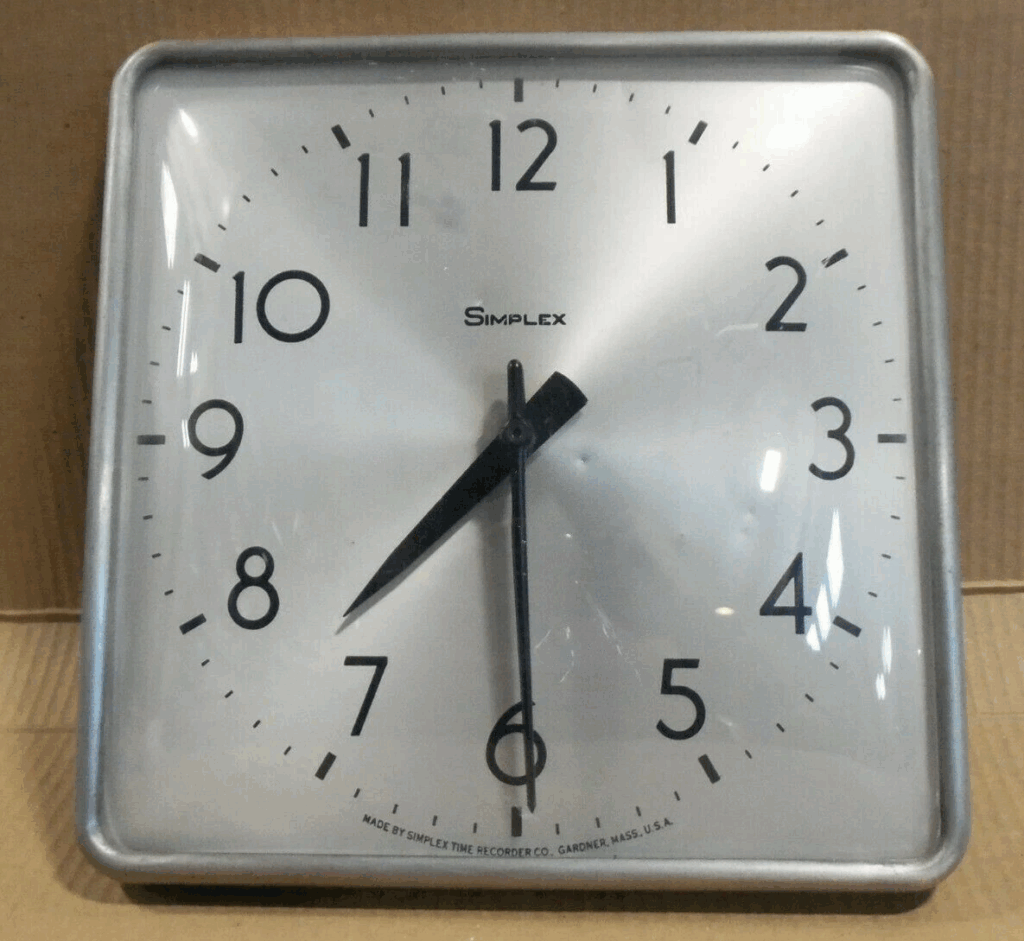
This Simplex 12.5 convex glass steel case clock from the 1970s was designed to stand out in schools and factories. Its large convex glass face made it easy to read from a distance, ensuring everyone could track time during busy hours. The clock’s robust steel case was perfect for withstanding the demanding environments of schools and factories. These clocks were often integrated into synchronized bell systems in educational institutions. Today, it’s worth approximately $275, making it a popular item among collectors of industrial clocks.
The Simplex clock was designed for practicality and durability, essential qualities for high-traffic environments. Schools and factories relied on these clocks for maintaining schedules, and the clear visibility was a major advantage. Its steel casing gives it a distinct look, combining strength and style. As time passed, the Simplex clock became a symbol of the era’s commitment to reliable timekeeping. For collectors, it’s not just a timepiece but a part of the history of industrial time management.
Montgomery Master Clock (Church or School Bell System Control Clock)
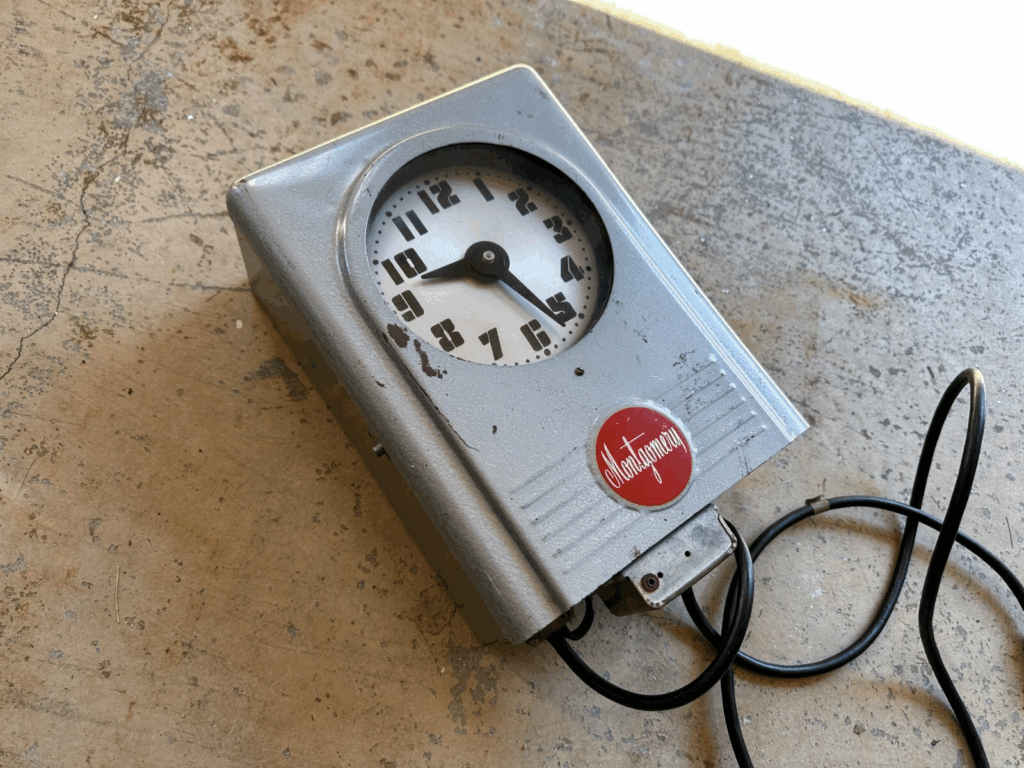
The Montgomery Master Clock was used in schools and churches to control bell systems, helping to keep everything on schedule. This clock was known for its precision and ability to synchronize multiple clocks and bells across a building or campus. Its functionality made it a central part of the school or church experience, ensuring timely bells for classes or services. These clocks were often mounted in central locations, such as bell towers or clock rooms. Today, Montgomery Master Clocks are worth around $180 to $220, depending on their condition.
The Montgomery Master Clock’s mechanical design allowed it to control several timepieces at once, an essential feature for large institutions. Schools would use these clocks to signal the start and end of classes, while churches relied on them to mark service times. Their robust construction made them long-lasting, and many have been preserved in historical buildings. For collectors, these clocks hold significant value, not just for their age but for their contribution to institutional life. They remain a cherished part of timekeeping history.
Standard Electric Time Co. Springfield Mass. School Factory Office Clock
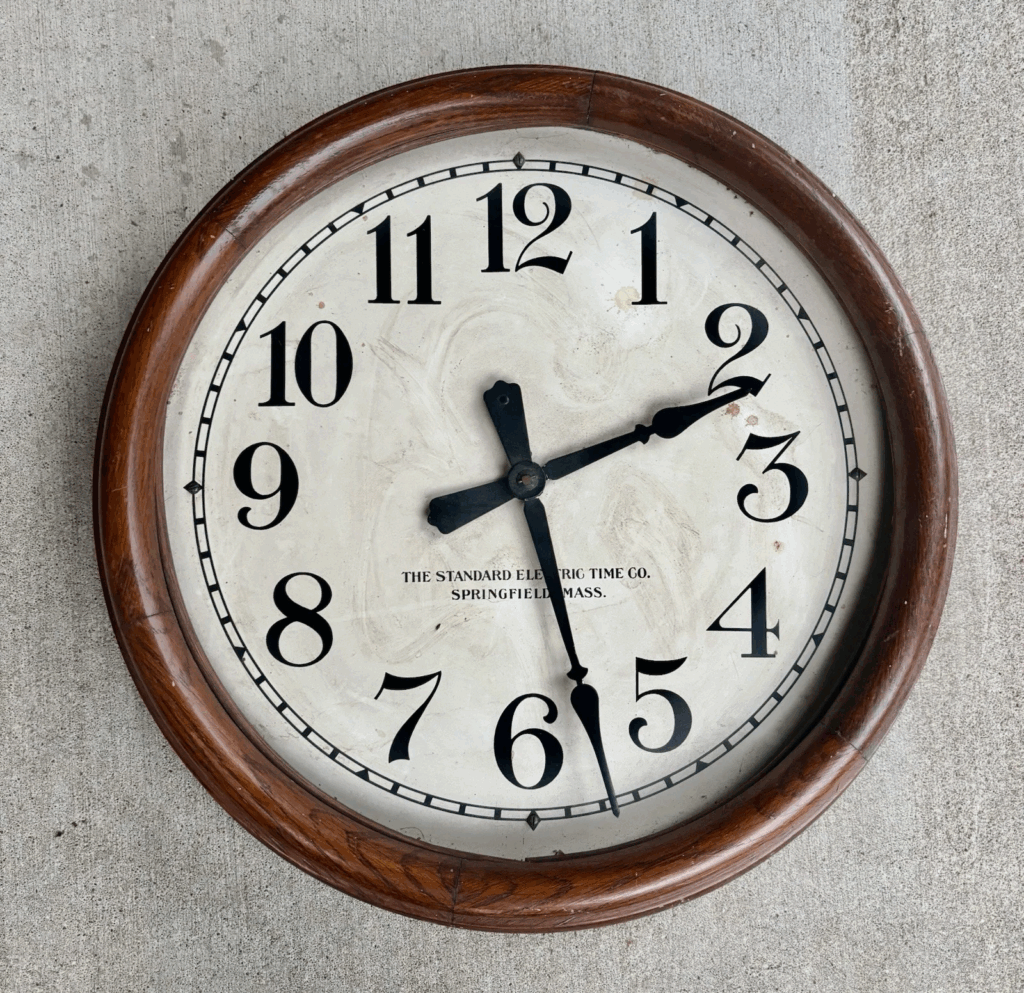
The Standard Electric Time Co. wall clock was a common fixture in both schools and factories. Known for its clear dial and simple design, it was built to be easily read from a distance. This clock was often seen in public spaces, where accuracy and reliability were essential. Its simple yet effective design made it a favorite for educational and industrial settings. The market value today ranges from $125, depending on the clock’s condition and authenticity.
Standard Electric Time Co. clocks were often used in synchronized bell systems to keep schools and factories running on time. Their minimalistic design was both functional and unintrusive, fitting into any setting. This clock’s electric movement ensured it was low-maintenance, making it ideal for busy environments. It was a part of many daily routines for decades. Today, it continues to be a sought-after piece for collectors of vintage timepieces.
Strela Wall Clock (Soviet Era School Wall Clock)
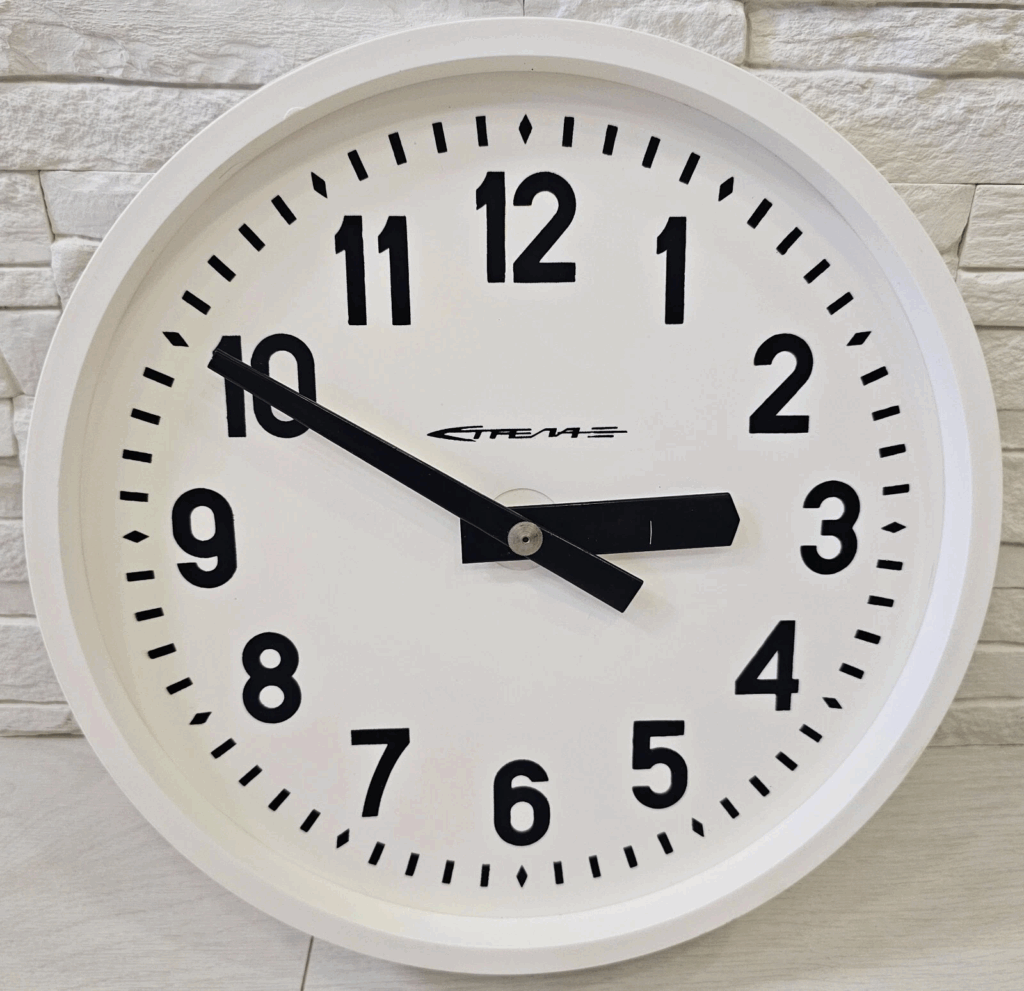
The Strela wall clock, from the Soviet era, is known for its minimalist design and distinctive Cyrillic numerals. Found in schools across Eastern Europe, this clock was built to last and designed to fit into the utilitarian style of the time. The clock’s straightforward design and rugged build made it perfect for bustling classrooms. Its simple design allowed it to blend seamlessly into educational environments. Today, the Strela clock is worth approximately $70, depending on its condition and rarity.
Made to withstand the demands of school life, the Strela clock’s functionality was its main selling point. The clock was part of a broader trend of practical design in Soviet-era schools, where durability and simplicity were prioritized. It often had a basic black frame and was designed to be highly readable. Collectors value the Strela for its historical significance as a piece of Soviet design. It’s an iconic timepiece that remains affordable for those looking to add a vintage piece to their collection.
New Haven School House Wall Clock
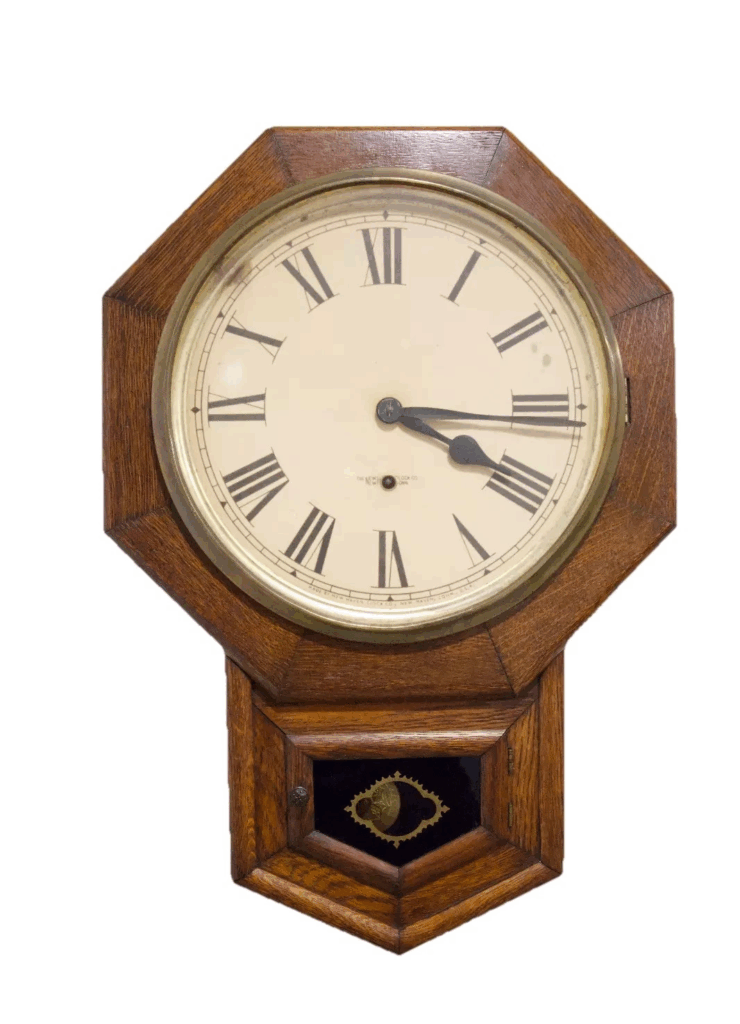
The New Haven School House Wall Clock, produced before the 1930s, features a wooden case with a simple yet functional design. This clock was widely used in schools across America, where clear timekeeping was essential. The design of the New Haven clock made it easy to read from a distance, which was perfect for large classrooms. Its clean lines and reliable mechanism made it a favorite in educational settings. Today, this clock can be valued at around $200.
New Haven clocks were commonly seen in schools from the late 19th century into the early 20th century. Their classic design was built to last and could endure the hustle and bustle of busy classrooms. The wood case and glass face were both practical and aesthetically pleasing, reflecting the time’s minimalist style. Collectors appreciate these clocks for their historical value and the fact that many have survived so long. It remains an affordable yet valuable piece for those who enjoy vintage timepieces.
Siemens School Office Wall Clock
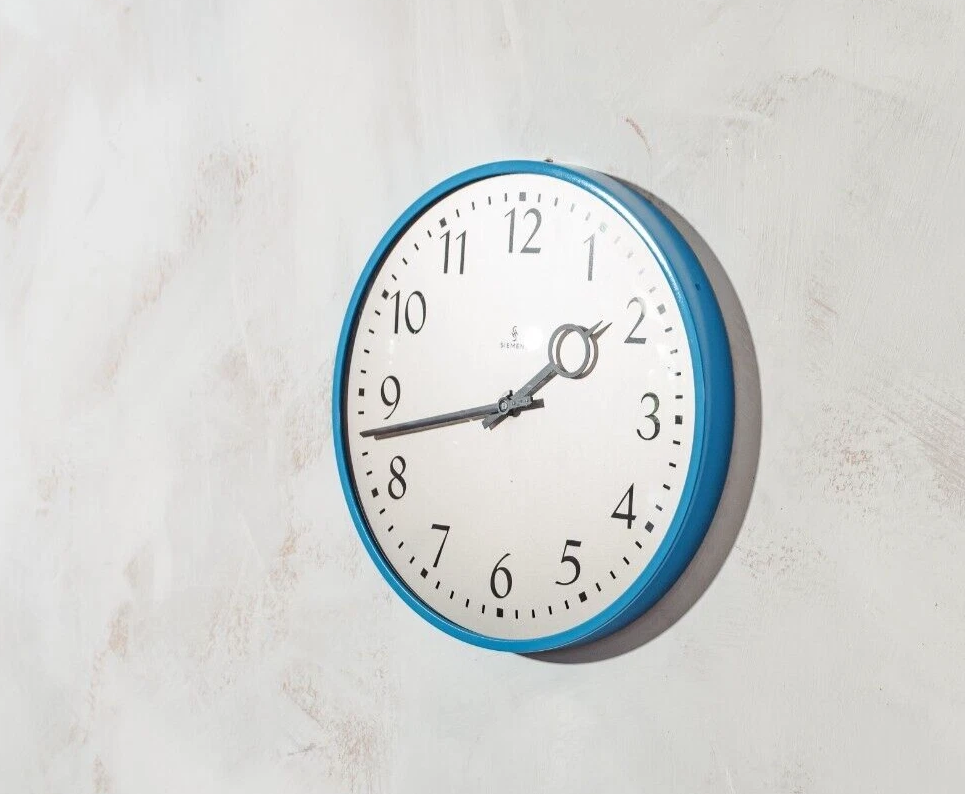
Siemens clocks from the 1980s were known for their precision and reliable timekeeping. These clocks were found in offices and schools, where accuracy was crucial for managing time efficiently. Their sleek design and digital features set them apart from earlier mechanical clocks. Siemens focused on providing high-quality timepieces that could stand the test of time. Today, these clocks are valued at about $340, reflecting their quality and historical significance.
The Siemens clocks were widely used in schools and office buildings throughout the 1980s. Their digital movement provided accurate timekeeping, ensuring they remained reliable for years. Known for their clean, minimalist look, they often blended well into both modern offices and educational spaces. Collectors today seek Siemens clocks for their sturdy design and history. With their lasting value, these timepieces continue to be a solid investment.
Telechron Model 1H912 School House Wall Clock
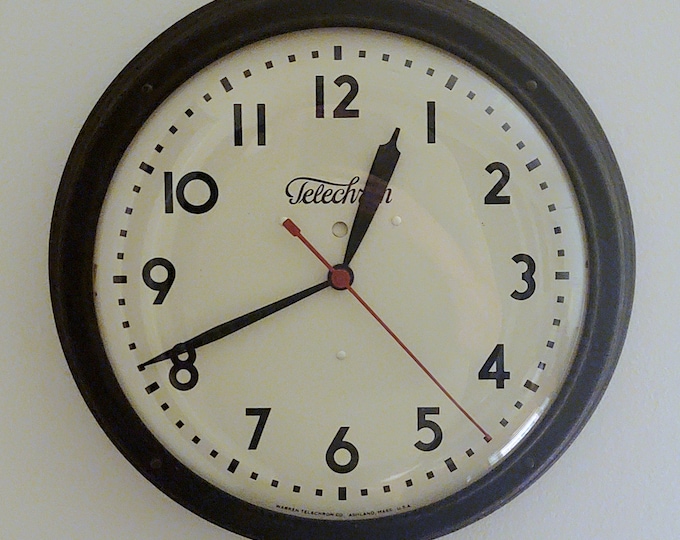
The Telechron Model 1H912 is a classic example of mid-20th-century American design, often found in schools during the 1940s and 1950s. Its bold numerals and metal case were designed for durability and clarity, making it perfect for busy classrooms. This clock’s electric mechanism reduced the need for manual winding, making it more convenient than older models. Telechron clocks were known for their reliability, and this model remains a favorite among vintage clock enthusiasts. The market value for this model is around $150.
In the mid-1900s, the Telechron Model 1H912 became a common fixture in schools, helping students and teachers stay on schedule. Its simple, effective design allowed it to blend seamlessly into any classroom, and its electric movement was a technological advancement at the time. These clocks were built to last, and many have survived decades of use in schools. Today, collectors value the clock not just for its functionality but for its nostalgic connection to the past. It remains a great find for those interested in vintage timepieces.
Seth Thomas School House Wall Clock
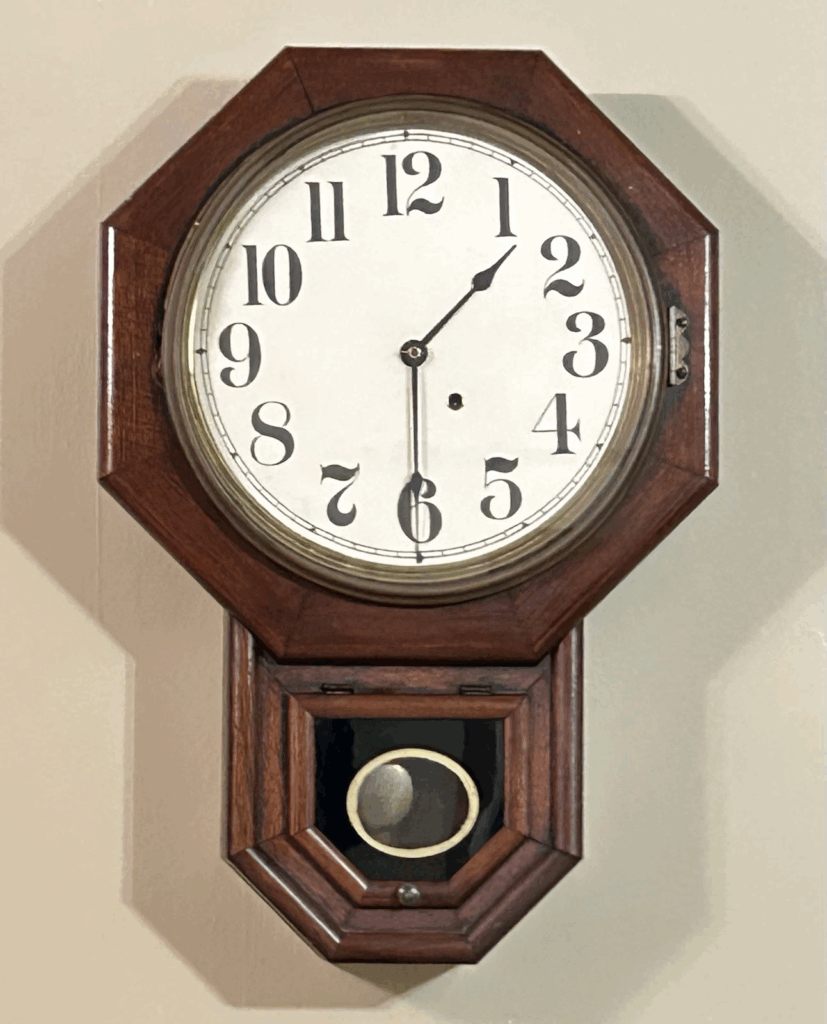
The Seth Thomas School House Wall Clock from the early 1900s is an iconic design that became synonymous with American schools. Known for its octagonal wooden case and clear, easy-to-read dial, this clock was a staple in classrooms for generations. Its robust construction ensured it could handle the daily wear and tear of school environments. This model is still cherished today, with its simple yet elegant design capturing the essence of early 20th-century craftsmanship. The clock is currently valued at $200 to $300, depending on its condition.
This clock’s distinctive octagonal shape and clean lines made it stand out in early schoolhouses. The large, bold numbers made it easy to read from across the room, ensuring that teachers and students could always keep track of time. The Seth Thomas clock is a symbol of the past, often sought after by collectors for its historical significance. Its design has inspired countless replicas, but the original still holds a special place in many collections. Today, it’s a valuable piece of history that adds a vintage touch to any collection.
Brillie School Clock
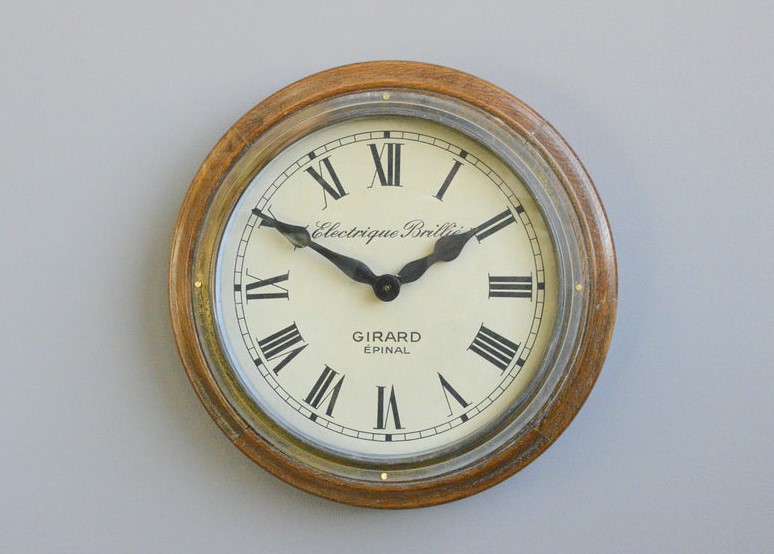
The Brillie School Clock, made around 1910, is a classic example of early 20th-century design. Its metal casing and simple dial made it a reliable choice for schools during that time. The clock’s utilitarian design was practical for the busy environment of a classroom. Despite its simplicity, the Brillie clock has a unique charm, with many collectors seeking it out for its vintage appeal. This clock’s market value is approximately $300.
In schools of the early 20th century, the Brillie clock was a dependable tool for managing time throughout the school day. Its clear, readable dial ensured that students and teachers alike could always keep track of the hours. The clock’s sturdy metal casing made it durable enough to withstand the rigors of a school environment. Collectors are drawn to the Brillie clock for its historical connection to educational life. Today, it remains a valuable find for those interested in vintage timepieces.
Smiths Enfield Wall Clock
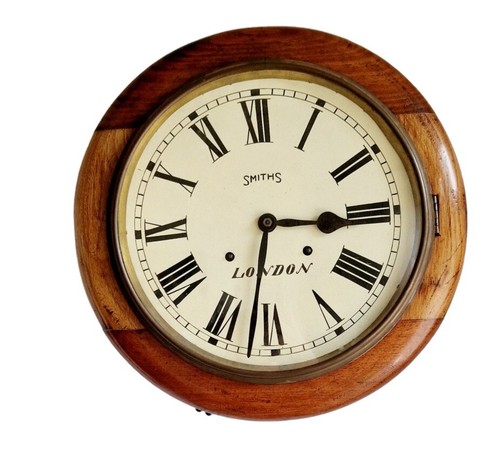
The Smiths Enfield wall clock, produced in 1910, is a classic British-made timepiece with a wooden case and traditional design. It was widely used in schools, railway stations, and factories across England and has become an iconic symbol of the early 20th century. Its robust construction and clear, easy-to-read face made it a reliable clock in high-traffic environments. Today, collectors appreciate its craftsmanship and historical value, with its market value estimated around $350. Its timeless appeal and sturdy build continue to make it a favorite among vintage clock collectors.
The Smiths Enfield clock’s elegant design and practicality ensured its place in both public and private institutions. Its simple, yet refined appearance made it an essential item for schools where punctuality was critical. The clock’s functionality and minimalistic style made it easy to incorporate into different environments. Collectors of industrial and school clocks seek out this model for its historical significance and unique charm. As an enduring piece of British design, this clock is a valuable find for anyone interested in timepieces from the early 20th century.
This article originally appeared on Avocadu.
